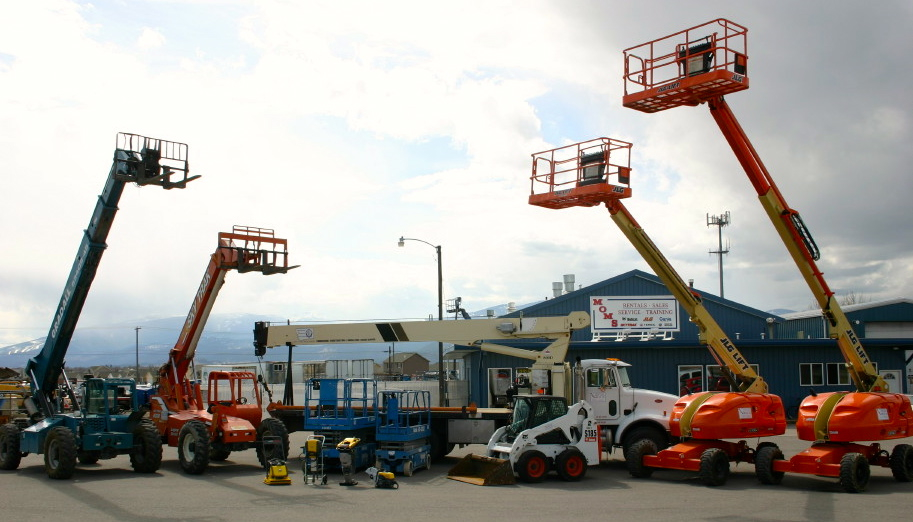Optimize Your Spending Plan by Understanding the Costs Related To Building And Construction Devices Rentals
Recognizing the full scope of prices connected with construction tools rentals is crucial for maximizing your budget plan. What approaches can be used to successfully manage these prices and make sure a more efficient rental experience?
Overview of Rental Costs
When considering construction tools leasings, comprehending the linked prices is critical for reliable budgeting and task planning. Rental prices can differ considerably based upon a number of aspects, including tools kind, duration of rental, and location. The first rental charge usually mirrors the equipment's market need and its connected functional abilities, influencing the overall expense.
Along with the base rental price, secondary costs might emerge, such as transportation costs, gas additional charges, and upkeep costs. It is important to represent these additional expenses to properly analyze the overall cost of renting devices. The rental duration can influence rates; longer leasings might qualify for reduced rates, while short-term rentals might incur higher daily fees.

Malfunction of Rental Rates
An extensive understanding of rental rates is necessary for contractors and job supervisors intending to enhance their budgets. Rental prices for building and construction equipment typically include several components, including base prices, time-based fees, and use charges.
Base rates are the core fees associated with the service of the tools, usually identified by the type and size of the equipment. These prices can vary considerably, affected by elements such as devices need, accessibility, and local market patterns. Time-based costs, which may be daily, weekly, or monthly, offer to accommodate various job timelines and rental durations.
Additionally, rental prices may consist of use fees, which apply when devices is made use of beyond a specified threshold, making certain that the rental company can represent deterioration. Seasonal need variations can likewise influence rental prices, with peak building periods generally commanding higher prices.
Moreover, understanding the rental firm's policies pertaining to upkeep and insurance can provide additional understanding right into the overall cost framework. By assessing these components, professionals can make enlightened choices, making sure the choice of rental equipment lines up with both project needs and budget constraints.
Additional Fees to Take Into Consideration
Comprehending the complexities of additional fees is crucial for service providers to manage their general leasing costs efficiently. Beyond the conventional rental prices, different supplemental fees can significantly affect the total expense of equipment leasing. These fees often consist of distribution and pickup costs, which can differ based upon range and logistics associated with transferring the equipment to and from the job website.
Furthermore, some rental companies might impose fuel additional charges if the devices is returned with much less gas than when leased. It is likewise necessary to recognize prospective cleaning costs, especially for customized equipment that calls for detailed upkeep after usage.

Thoroughly evaluating the rental agreement and clarifying these extra costs in advance can assist contractors make sure and avoid unanticipated prices that spending plans stay undamaged throughout the project lifecycle.
Maintenance and Repair Expenses
Normal repair and maintenance costs are usually overlooked elements that can significantly affect the general cost of building tools rentals. When leasing equipment, it is vital to take into consideration not only the rental fees but additionally the possible expenses linked with keeping the machinery in optimal operating condition.
Several rental business include fundamental maintenance as component of the rental arrangement; nonetheless, extra unexpected break downs or considerable repairs can lead to additional expenses. It's vital to assess the rental agreement very carefully to recognize what upkeep solutions are covered and what responsibilities fall on the renter.
Moreover, devices that is not well-kept can bring about inefficiencies at work site, possibly raising and creating hold-ups task expenses. To reduce these risks, it is a machinery moving company good idea to perform routine evaluations and preserve open interaction with the rental supplier relating to any type of issues that emerge throughout usage.
Insurance Coverage and Obligation Prices
Insurance coverage and liability costs are vital parts that can considerably influence the total expenditure of construction devices services (heavy a fantastic read equipment rental). These costs make certain that both the rental business and the customer are safeguarded from potential financial losses arising from mishaps, damage, or burglary throughout the rental duration

In addition, customers should recognize any type of deductibles or exclusions in the insurance coverage, as these can influence possible out-of-pocket costs. Recognizing the terms of any type of insurance policy coverage is crucial to prevent unexpected prices. Eventually, budgeting for insurance policy and obligation costs can aid make sure a smoother rental experience and secure versus economic dangers related to building jobs.
Conclusion
In final thought, a thorough understanding of the costs connected with building tools services is crucial for effective spending plan monitoring. Eventually, informed decision-making regarding equipment rentals adds to the general success of construction endeavors.
Rental expenses can vary substantially based on several factors, consisting of tools kind, duration of service, and location (forklift rental). The rental period can impact rates; longer leasings may qualify for affordable rates, while short-term leasings might incur greater daily costs
By carrying out extensive research study and engaging with respectable rental companies, service providers can efficiently navigate the complexities of rental pricing, eventually maximizing their economic sources.
Beyond the common rental prices, numerous additional charges can significantly affect the overall cost of tools service. Rental firms usually offer liability insurance that covers injuries to third celebrations or damage to like it residential or commercial property, while devices damages insurance can cover the price of repair services or replacement if the rented out devices is harmed.